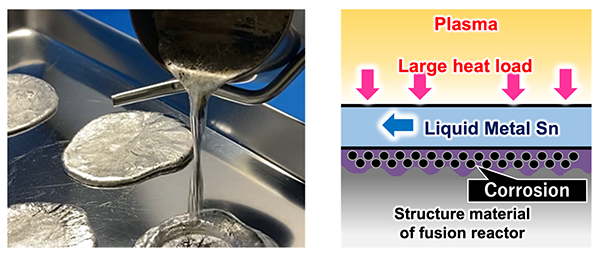Mitigating corrosion by liquid tin could lead to better cooling in fusion reactors
2022.12.28 Research Results (Press Release)Researchers at Tokyo Institute of Technology and the National Institute for Fusion Science have clarified the chemical compatibility between high temperature liquid metal tin (Sn) and reduced activation ferritic martensitic, a candidate structural material for fusion reactors. This discovery has paved the way for the development of a liquid metal tin divertor, which is an advanced heat-removal component of fusion reactors. A device called a divertor is installed in the fusion reactors to maintain the purity of the plasma. For divertors, there has been demand for liquid metals that can withstand extremely large heat loads from high-temperature plasma.
The research results are expected to lead to the development of liquid metal tin (Sn) divertors with excellent reliability in the development of fusion reactors, which is being accelerated to achieve a carbon-neutral society and zero-carbon energy, and were published in online edition of Elsevier's Corrosion Science on October 31, 2022.

Please see below for the details.
